Key takeaways:
- Timing your cannabis harvest is crucial; observing trichome color changes (from clear to milky white and amber) indicates maturity and impacts potency and flavor.
- Pistil color transformation from white to orange is another sign of readiness, emphasizing the importance of patience in the growing process.
- Using tools like a jeweler’s loupe for trichome inspection and a moisture meter for checking bud moisture can significantly enhance harvest quality.
- Personal experience and intuition play a vital role in harvest timing, connecting growers more deeply to their plants and the cultivation process.
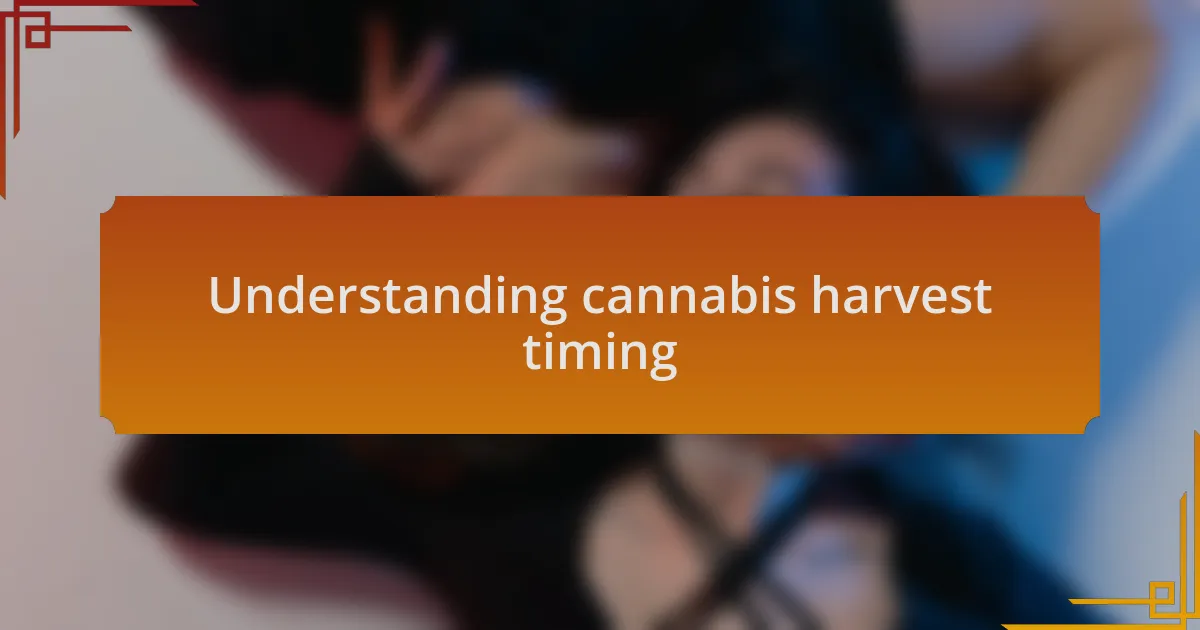
Understanding cannabis harvest timing
Understanding the timing of your cannabis harvest is crucial to maximize the potency and flavor of your crop. I remember the first time I tried to gauge the right moment—staring at the trichomes wondering if they looked cloudy enough. In that instance, I learned that the balance of milky white and amber-colored trichomes can significantly influence both the effects and the taste of the final product.
One of the most exciting aspects of harvesting is observing the plant as it transforms. I often found myself captivated by the changing colors of the pistils, turning from white to deep orange; it felt like an artist revealing a masterpiece. This transformation not only signaled readiness but also connected me more deeply to the cultivation process. Have you ever just stood and admired your plants, feeling that mix of anticipation and pride?
I’ve also realized that environmental factors play a huge role in harvest timing. Changes in temperature, humidity, and even moon cycles can impact cannabinoid development. There have been times I harvested when I felt the weather turning, only to discover that the potency was not what I expected. Waiting for those perfect conditions can be excruciating, but those extra days often yield a rewarding and richer experience.
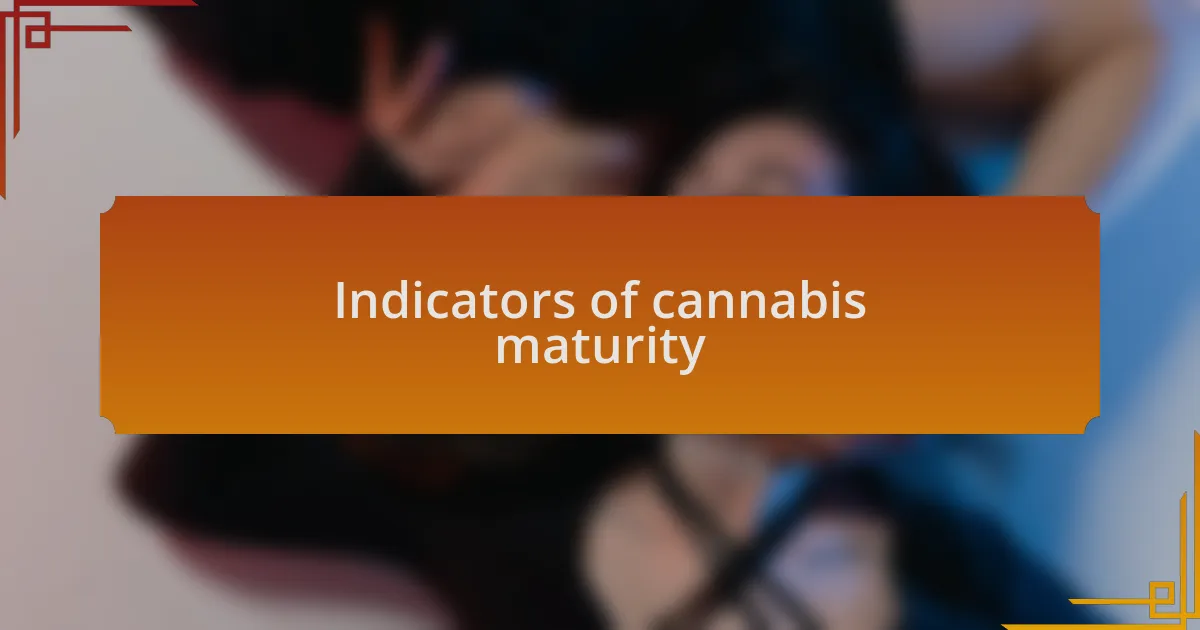
Indicators of cannabis maturity
The most reliable indicator of cannabis maturity lies in the trichomes. I’ve stood under the light, magnifying glass in hand, and examined them closely. When they shift from clear to a milky white, that’s your signal to start paying attention. The first time I saw that transition, it sparked a wave of excitement—it felt like discovering a hidden treasure.
Another key sign is the pistils’ color. Watching those delicate hairs change from bright white to a rich, rust-like orange is like witnessing a natural clock ticking down to harvest. In my early days of growing, I often mistook just a few orange pistils as a sign to harvest, only to realize later that patience pays off as more would change with a little extra time—I learned that every day can bring a richer tapestry of colors.
Lastly, consider the overall health of the plant. When I spotted the leaves starting to yellow and wither away, I knew I was getting close. That moment brought a mix of sadness and fulfillment; it was a reminder that the plant was ready to give its all. Have you ever felt that bittersweet blend of emotions just before harvest? It’s a testament to the journey of growth, where every leaf and bud tells its own story.
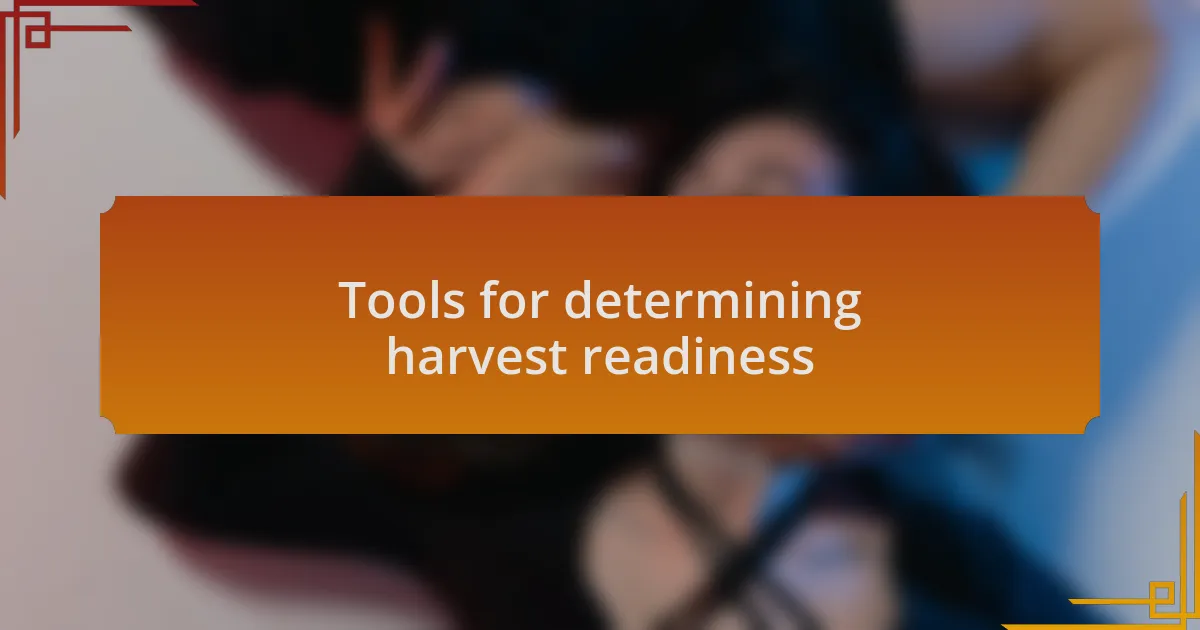
Tools for determining harvest readiness
When it comes to determining harvest readiness, a jeweler’s loupe is one of my favorite tools. This small magnifier allows you to inspect those precious trichomes up close, offering a window into the plant’s maturity. I remember the first time I used one; it felt like stepping into a different world, where I could see every tiny detail of the plant’s development. Can you imagine the thrill of spotting the first milky trichome? It’s a tiny victory that signifies the culmination of your hard work.
Another indispensable tool is the moisture meter. I once overlooked how crucial this could be until I faced a harvest that was too wet, leading to issues with mold. A good moisture meter allows you to check the moisture levels in the buds, ensuring that when you do harvest, you’re not just getting quantity but quality too. Isn’t it comforting to know you have a way to gauge the readiness of your crop down to its moisture content?
Lastly, I can’t stress enough the importance of a simple calendar or journal. Tracking your plant’s growth stages and changes is invaluable. I started this habit during my second grow, and it transformed how I approached harvesting. Reflecting back on previous harvests provides precious insights, and I often ask myself, “What did I learn last time that could improve my next one?” This practice not only enhances your skills but deepens your connection to the entire growing process.
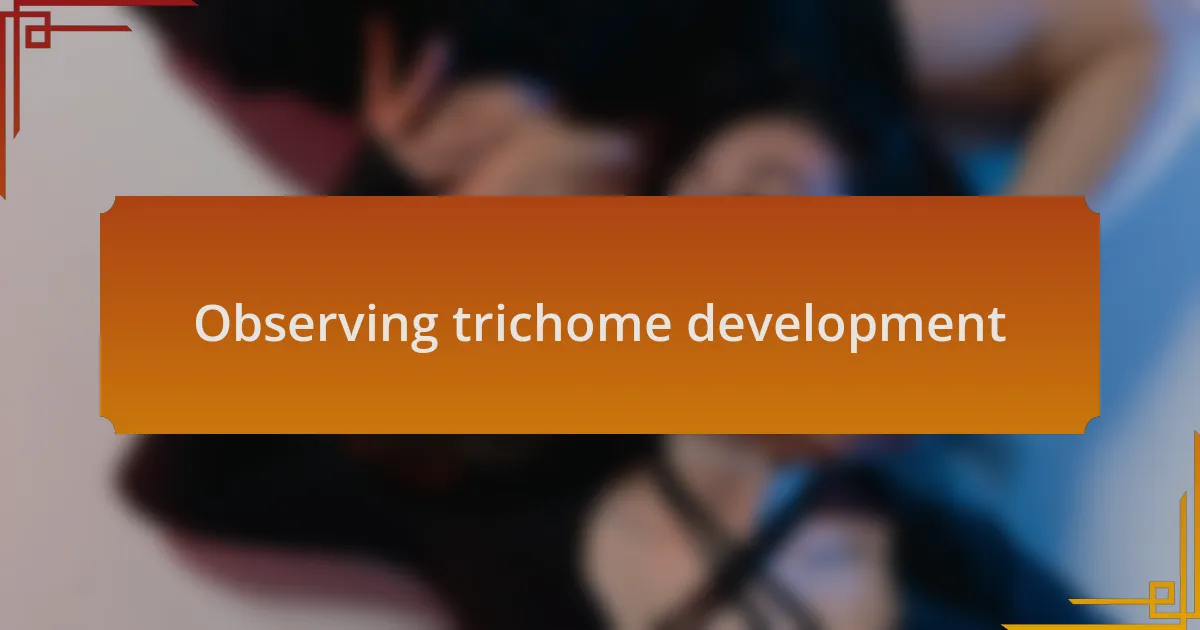
Observing trichome development
Observing trichome development is like having a backstage pass to your plants’ growth. As I examined trichomes through my loupe, I often felt a wave of anticipation wash over me. It’s that moment when you can see the clear, glassy trichomes start to shift to a milky white; it’s both thrilling and nerve-wracking. Have you ever stared at those glistening crystals, wondering if it’s time to harvest or if you should wait just a bit longer?
The peak of trichome maturity can be surprisingly elusive. I remember a particular grow where I kept checking daily, caught in a tug-of-war between patience and eagerness. There’s an art to it—recognizing the subtle color changes and understanding their implications. When the first amber trichomes appeared, I felt a rush of excitement, knowing I was just steps away from enjoying the fruits of my labor. How many indicators do you trust before deciding it’s time?
Timing your harvest based on trichome development is more than just science; it’s an emotional journey. Each observation leads to a deeper appreciation for the plant and the process. Just like in life, timing is everything, and I’ve learned to trust my instincts. So, the next time you’re peering through that loupe, take a moment to soak it all in. What you’re witnessing is not just the end of a cycle, but a confluence of effort, knowledge, and passion.
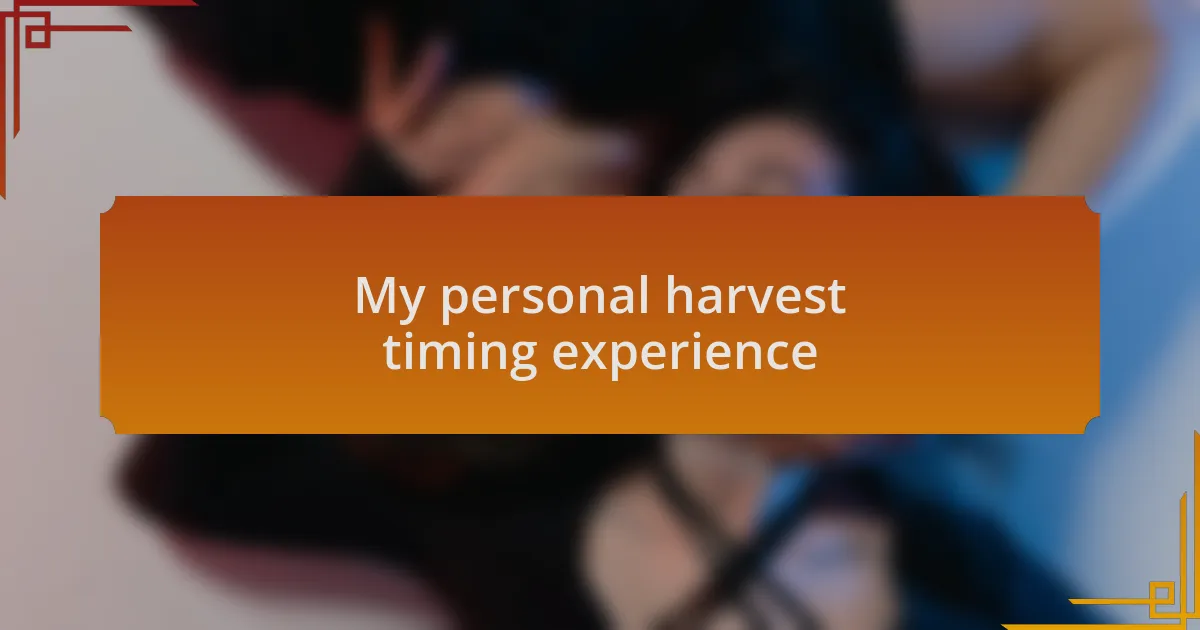
My personal harvest timing experience
As I approached my harvest, I felt a mix of excitement and trepidation. Just the day before cutting down my plants, I could have sworn I smelled a hint of something sweet in the air, whispering that the time had come. Have you ever had that feeling, where instinct pulls you toward a decision? I relied heavily on aroma that day, reminding me how intertwined our senses can be with the timing of a harvest.
The first time I harvested, I was guided largely by what I read, but nothing compared to the feeling I had when I stood in my garden, scissors in hand. I took a deep breath and cut the first branch; it felt monumental. It was a moment I’ll never forget, having learned that sometimes the best cues come not from textbooks, but from standing there amidst your plants, feeling the energy they exude, urging you to act.
Looking back, I realized that my timing was a reflection of my relationship with the plants. Each grow taught me more about how to listen to the plants and trust the signs they give. Isn’t it fascinating how nature has its own rhythm? By the end of that season, I learned that my experience, intuition, and respect for the growing cycle all played pivotal roles in finding that perfect harvest moment.